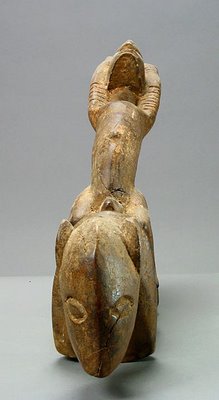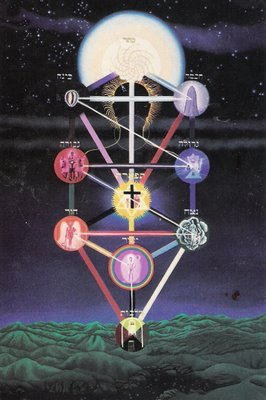Oshodi Oshodi: Babalawo!
toyin adepoju: good morning. I hope you a good weekend?
toyin adepoju: weekend
Oshodi Oshodi: worked and spent time with family, immediate and extended. It was pleasurable
Oshodi Oshodi: and you?
toyin adepoju: forgive my tormenting me. look at your mate on this page. she finished BA same year as me
http://www.chem.ucl.ac.uk/people/fielding/biog.htmlOshodi Oshodi: she is even attractive...doesnt look academic like you
toyin adepoju: type this into your browser
toyin adepoju: ucl.ac.uk/news/news helen fielding
toyin adepoju: copy and paste just like dat
Oshodi Oshodi: ok
Oshodi Oshodi: wow!
Oshodi Oshodi: a trail blazer!toyin adepoju: de evidence speaks for itself
toyin adepoju: her biography at
toyin adepoju: shge finished BA in 1989 de same year as me
Oshodi Oshodi: that does not matter to me, she had certain advantages you did not have
toyin adepoju: lets not dwell too much on that
Oshodi Oshodi: support of a stable family (probably), support of the educational system and living in a stable predictable society
toyin adepoju: did i not have support of a stable family? I was already employed in an academic job before she was according to her CV
Oshodi Oshodi: not exactly
Oshodi Oshodi: your parents were separated
toyin adepoju: YOUR LAST TWO POINTS MIGHT BE CLOSER TO THE MARK
Oshodi Oshodi: the NGR system did not make things easy for you in ALL regards
toyin adepoju: another point is dat it has taken me more than 20 yrs to get the opportunity i have now
toyin adepoju: i tell you i don go psychiatric hospital before?
Oshodi Oshodi: for wetin?
toyin adepoju: its too much to go into the details now but de bottom line was my mum was advised to send me there on account of my radical attitudes to education which were widely believed to the expressions of disturbed mind
toyin adepoju: a disturbed mind
Oshodi Oshodi: are you serious?
Oshodi Oshodi: you see, that could be as a result of family issues...
Oshodi Oshodi: in fact I am sure it is
toyin adepoju: explain please
Oshodi Oshodi: your parents were not together then, and may have been rebelling (with out realising the cause).
toyin adepoju: i will tell you de details in a few minutes. it had nothing to do with rebelling although a number of people could not help thinking it had to do with my family
Oshodi Oshodi: ok, I am waiting...
toyin adepoju: She struggled with her own incomprehension of my radical attitudes which she could not relate to anything in her experience, my father was in England with his new wife and largely, if not completely out of touch, she was struggling with all kinds of challenges, economic, spiritual and psychological-a part of the psychological is that I am convinced she subconsciously viewed me as representing the man who had so brutally hurt her and so was often antagonistic towards me. that did not mean that she did not love me but the love was entwined with contradictory emotions which I suspect were at times fanned by advisers.She tried hard to understand accommodate my attitudes to education, took me to an Indian guidance counsellor who tested my IQ since the counsellor believed I was making claims ttoyin adepoju: claims that suggested I saw myself as having a high IQ and she also took me to professor of psychiatry at Uniben who was convinced I was not well and wrote in his report that I had some weird ideas about spiritual contacts.Even when my father came back to Nigeria and I visited him, the whole thing was bizarre to him but he made some proposals which suggested that if he had been part of our family de issue might have been handled differently even if my family did not poses the cultural background or social help to understand the situation but he could not follow up on his ideas.Oshodi Oshodi: this all relates to my point
toyin adepoju: indirectly.you spoke of a rebellion
toyin adepoju: yet you don’t know what toyin was doing that was thought crazy
Oshodi Oshodi: a rebellion it is, it doesn’t have to be a physical expression
toyin adepoju: you say you admire creativity, do you think it always comes in ways that people are comfortable with?
toyin adepoju: i continue
toyin adepoju: eventually it was at the psychiatric hospital that i made friends who convinced me to do what everyone wanted me to do.i think it was because i had been able to make some progress in my initiatives before then, thereby giving me the confidence to continue with conventional, the emotional support i got from my friends dere which was free of de complications in my domestic setup, as well as the compulsion of the experience of being taken to the hospital by force alont the nurses abducted me in the midst of a magical ritual which in itself convinced dem i was not okay.
toyin adepoju: now what was the issue, why was i thought to be unwell?
toyin adepoju: i had resolved, after one year of A Levels that I was not going to go the university. I stated that i was going to educate myself
toyin adepoju: it made little sense
Oshodi Oshodi: it must have been agonizing what you were going throughtoyin adepoju: my mum struggled to understand and was convinced de key was my going to school to pursue my dreams
toyin adepoju: but i was convinced dat school was not de answer and with timnee i realise how right i was
toyin adepoju: later, we could continue. its really a face to face discussion
toyin adepoju: i was convinced dat my educational vision could not be realised in a school
toyin adepoju: i later concluded that i was not ready for the university
toyin adepoju: my mum filled and submitted my jamb form
toyin adepoju: and i was persuaded to do jamb
Oshodi Oshodi: you mother never gave up
Oshodi Oshodi: you owe her a lot
toyin adepoju: yes. even though she did not really know what was going on. I had very high grade and was admitted to uniben but i twice dropped out since i found the place claustrophobic intellectually
toyin adepoju: now,to,lead to the case i am making
toyin adepoju: how come that I, who was an indifferent student in secondary school which i left at 16 in 1978 was able to get 311 out of 400 when i did jamb in 1979-80,even though since i was persuaded late to do jamb,studied for it in only two weeks?
Oshodi Oshodi: 311 in JAMB!!!!! That is fantastic
toyin adepoju: .thanks for the frank appreciation.de questions is how was i able to do it with two weeks study having spent the time before then with bad A level 1 result since i was not really keen, doing extracurricular reading rather than my studies was an average secondary school student. I did not have any A1 in my WAEC.i have not always been this motivated about schooling as you see me today
Oshodi Oshodi: na your mama prayer they carry you
Oshodi Oshodi: hold on...
toyin adepoju: we thank God for her but there are also OTHER FACTORS. I went through a transformative experience after my secondary school that, as well as making the JAMB feat possible, was what inspired me with the idea that i needed time to get my cognitive bearing before going to the university.
Oshodi Oshodi: I dey come...toyin adepoju: i had read widely in my family's library, been fired by ideas about people i had come to admire, had become convinced through reading the Grail message that the current pedagogical regime represented by Western education represented a truncation of human potential ,had had practiced some yoga under the influence of Buddhism and the Grail message and had revelatory experiences that sealed the transformation in my thinking.i resolved to work out and apply an educational program of my own as an alternative to Western education. I later resolved that i could go to the university later after addressing that burning issue which had become more than an obsession. it defined my existence.
toyin adepoju: Even though I had to postpone those goals in order to succeed academically in terms of the linear progression expected by society, I have come back to them again and again and they are at the heart of the motivation, research design and gaols of my current academic research. my experiences in the UK have emboldened my efforts to address these ideas from within academia but i needed some time off from academia to pursue what Arnold Toynbee, writing about monasticism, described as the periodic need to take time off from the business and please and pleasure of the moment and "measure human potential against the human condition"toyin adepoju: tanks for de opportunity to take stock. I know i can count on you to listen. i need to go and bath now and go out briefly.
on family and success and single parent families see
Barack Obama 







